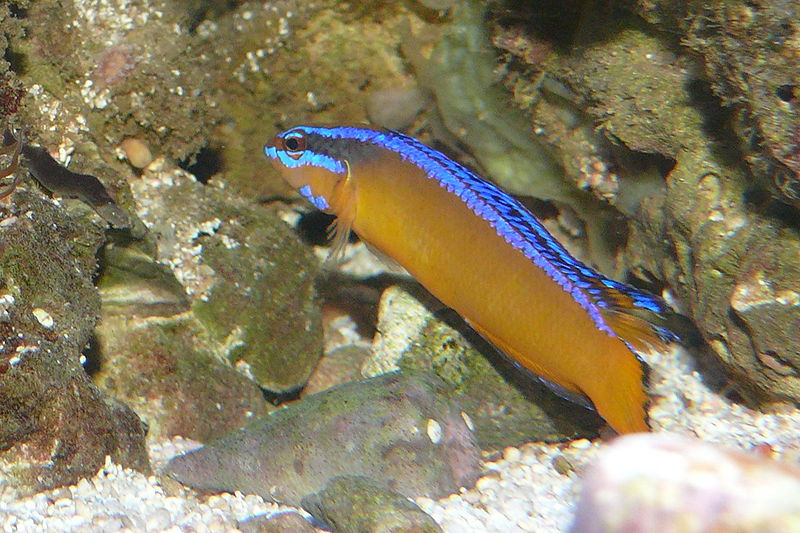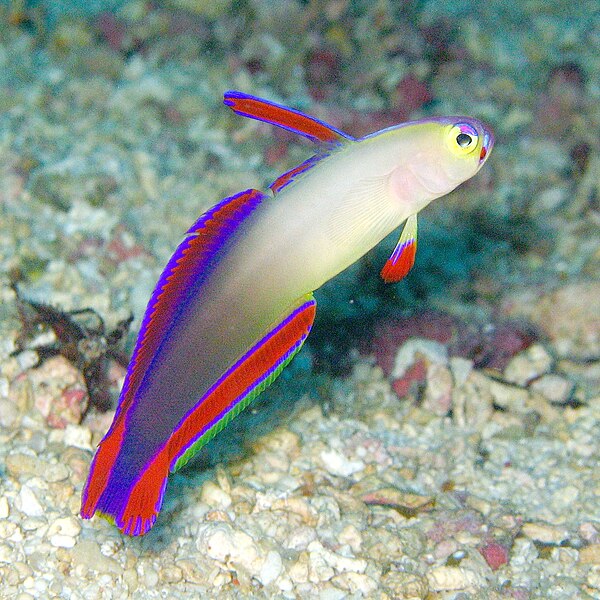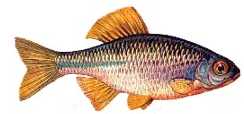 The Marine Bio Staff at That Fish Place gets a lot of questions regarding fish husbandry (what can I put in my tank and will it get along with…), especially as technology is advancing and smaller aquariums are becoming easier and easier to maintain. Freshwater options tend to be much easier – small schooling fish like tetras, danios, guppies and others have been aquarium staples for ages – but smaller saltwater tanks can be much trickier to populate. Aside from the tempting beauty of many larger or more aggressive fish, even smaller fish from the coral reefs have more territorial personalities than their freshwater counterparts. Many popular fish either grow far too large, aggressive or territorial for the smaller aquariums that are becoming very popular.
The Marine Bio Staff at That Fish Place gets a lot of questions regarding fish husbandry (what can I put in my tank and will it get along with…), especially as technology is advancing and smaller aquariums are becoming easier and easier to maintain. Freshwater options tend to be much easier – small schooling fish like tetras, danios, guppies and others have been aquarium staples for ages – but smaller saltwater tanks can be much trickier to populate. Aside from the tempting beauty of many larger or more aggressive fish, even smaller fish from the coral reefs have more territorial personalities than their freshwater counterparts. Many popular fish either grow far too large, aggressive or territorial for the smaller aquariums that are becoming very popular.So what fish should you look for? Here are some suggestions for smaller aquariums (30 gallons and under for the purpose of this blog). Keep in mind that these are general recommendations and guidelines; not all the fish in these groups are appropriate for smaller tanks, so if you find one you like, make sure it’s still compatible for your situation.
Flasher Wrasse (genus Paracheilinus) and Fairy Wrasses (genus Cirrhilabrus)
These two groups of wrasses are very similar; both are small, peaceful and very colorful. Flasher Wrasses are usually the most suitable since most stay much smaller, but some Fairy Wrasses stay fairly small as well.
Some examples: McCosker’s Flasher Wrasse (P. mccoskeri), Longfin Fairy Wrasse (C. rubiventralis)
Dottybacks (genus Pseudochromis and genus Pictichromis)
 Size-wise, there are lots of acceptable and colorful choices. Temperament-wise, use caution. Some of these can get downright belligerent about their territory, but if you have plenty of rubble and rockwork, and keep the other tankmates to fish occupying the higher levels of the aquarium, they can make excellent additions.
Size-wise, there are lots of acceptable and colorful choices. Temperament-wise, use caution. Some of these can get downright belligerent about their territory, but if you have plenty of rubble and rockwork, and keep the other tankmates to fish occupying the higher levels of the aquarium, they can make excellent additions.Some examples: Surge Dottyback (P. cyanotaenia), Diadema Dottyback (P. diadema), Orchid Dottyback (P. fridmani)
Blennies may become territorial, but some still remain small and/or docile enough to be kept in small aquariums. Blennies from the Ecsenius genus are among some of the smallest, and many from the Amblyeleotris genus are appropriate as well.
Some examples: Tailspot Blenny (E. stigmatura), Twospot Blenny (E. bimaculatus), Gorgeous Shrimpgoby (A. wheeleri)
Gobies in general are a peaceful group of fish but many still need more room than these smaller tanks can provide. A few groups stay very small and docile however. For these smaller aquariums, look for gobies from the genuses Koumansetta (only two species – Hector’s Goby, K. hectori, and  Rainford’s Goby, K. rainfordi), Elacatinus(“cleaner gobies”), Gobiodon (“clown gobies”), and Nemateleotris(“firefish”).
Rainford’s Goby, K. rainfordi), Elacatinus(“cleaner gobies”), Gobiodon (“clown gobies”), and Nemateleotris(“firefish”).
 Rainford’s Goby, K. rainfordi), Elacatinus(“cleaner gobies”), Gobiodon (“clown gobies”), and Nemateleotris(“firefish”).
Rainford’s Goby, K. rainfordi), Elacatinus(“cleaner gobies”), Gobiodon (“clown gobies”), and Nemateleotris(“firefish”).Scorpionfish and Frogfish
Many species of these two cryptic groups of fish stay relatively small and aren’t very active, so they don’t need a lot of swimming room. They are ideal for “species only” set-ups but use caution – they will eat anything small enough to fit in their mouths and scorpionfish have venomous spines.
Like the previous group, many hawkfish prefer to perch and wait rather than actively swim and hunt for food. Most grow large however and may become more aggressive; look for the smaller hawkfish like those from the Cirrhitichthys genus.
Some examples: Dwarf Hawkfish (C. falco), Pixie Hawkfish (C. oxycephalus), Spotted Hawkfish (C. aprinus).
Pygmy Angelfish (genus Centropyge)
 Most of these fish are too large or temperamental for aquariums smaller than 30 or 45 gallons but a few especially “pygmy” pygmy angels can be kept in smaller tanks. They should still not be kept in nano-tanks or with exceptionally docile tankmates but can still suitable in small tanks with only one or two other fish.
Most of these fish are too large or temperamental for aquariums smaller than 30 or 45 gallons but a few especially “pygmy” pygmy angels can be kept in smaller tanks. They should still not be kept in nano-tanks or with exceptionally docile tankmates but can still suitable in small tanks with only one or two other fish.Some examples: Cherub Pygmy Angelfish (C. argi), Fisher’s Pygmy Angel (C. fisheri), Fireball Pygmy Angel (C. acanthops).
These fish are notoriously territorial but are still some of the most popular fish for tanks of all sizes, probably because they are often colorful, sold very small and are most similar to the tetras and danios so popular in freshwater. With time though, they can become bullies and some species may lose their bright juvenile coloration. A few species stay smaller but stock very carefully – try to avoid other fish that may inhabit the same mid-water regions of the tank or are similar in coloration.
Some examples: Vanderbilt’s Chromis (Chromis vanderbilti), Talbot’s Damsel (Chrysiptera talboti), Orange Skunk Clownfish (Amphiprion sandaracinos).
Cardinalfish (genuses Apogon, Pterapogon, Zoramia, Sphaeramia)
Though not as color-saturated as the damsels, these fish are often ornate and delicately colored. They are also fairly peaceful and may even breed in some aquariums. They can be kept in schools in larger aquariums but can also be kept singly in smaller tanks.
Some examples: Threadfin Cardinal (Z. leptacantha), Pajama Cardinal (S. nematoptera), Redstriped Cardinal (A. margaritophorus)
Though not all of these fish are suitable for smaller aquariums and there are many other fish outside of these groups that can be kept in our 30-gallon-and-under tanks, hopefully this helps you get started with some options. Feel free to let us know if you aren’t sure if a fish is appropriate for your tank!
Solor Wrasse image referenced from wikipedia and originally posted by Dieter Karner
Pseudochromis aldabraensis image referenced from wikipedia and originally posted by Haplochromis
Purple Firefish image referenced from wikipedia and originally posted by Tanaka Juuyoh
Cherub Pygmy Angel image referenced from wikipedia and originally posted by Brian Gratwicke
Pseudochromis aldabraensis image referenced from wikipedia and originally posted by Haplochromis
Purple Firefish image referenced from wikipedia and originally posted by Tanaka Juuyoh
Cherub Pygmy Angel image referenced from wikipedia and originally posted by Brian Gratwicke
